SMA Right Angle Adapter: 90°, 45°, 135° & Bulkhead
Sep 22,2025
Introduction
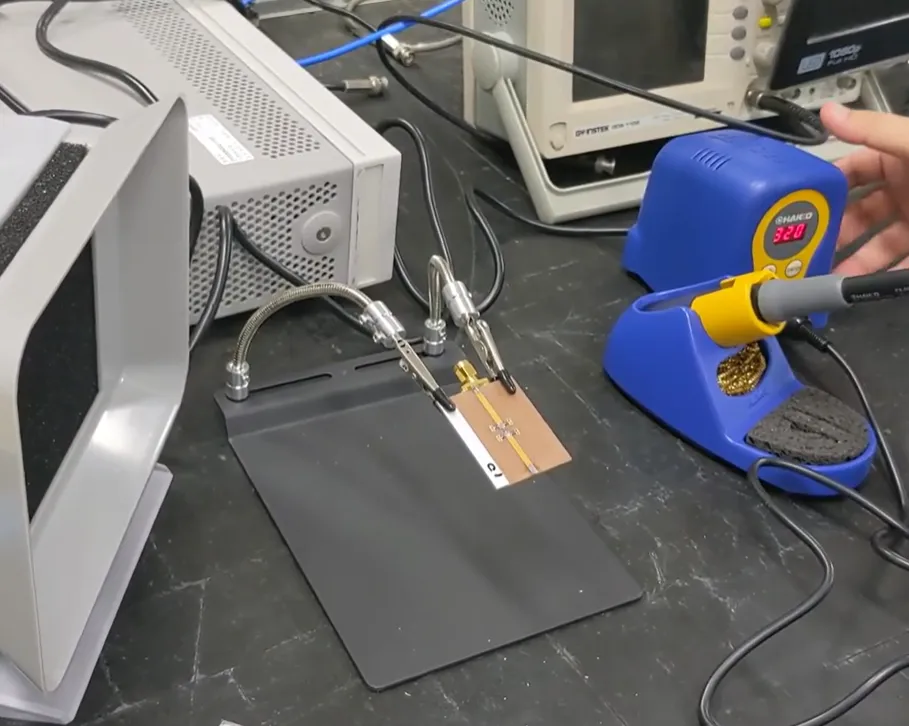
This diagram explains how right angle adapters provide a clean and reliable directional change when straight connectors are impractical due to space constraints in routers, SDR boards, or test equipment.
RF engineers and design technicians often run into a familiar roadblock: clearance. A connector on a router, SDR board, or test instrument may sit too close to a heat sink or press against the enclosure wall. Push in a straight plug, and you risk bending the cable—or worse, stressing the port itself. In those situations, a sma right angle adapter becomes the small but critical fix, turning the connection cleanly without sacrificing reliability.
The catch is that these little “elbows” aren’t as simple as they look. Details such as frequency rating, gender, and even the plating finish can decide whether the link works flawlessly or fails in the field. I’ve seen engineers lose hours because they grabbed an RP-SMA by mistake; the parts looked identical until they realized the pins didn’t match. A quick check beforehand would have saved the trouble.
At TEJTE, adapters are specified with the kind of numbers that hold up under real use: DC to 6 GHz standard, with some extending to 12.4 GHz or even 18 GHz. Insertion loss stays low at ≤0.15 dB @ 6 GHz, which is practically the same as a short coax stub. Housings are brass with gold plating or stainless steel for tougher duty, and they’re rated for 500–1000 mating cycles. If you’ve ever damaged an SDR port in a cramped bay by forcing in a straight connector, you’ll understand why giving more thought to these small parts is worth it.
Identify angle, gender, and polarity before you order
Before adding an adapter to your cart, pause for a moment and check three things: angle, gender, and polarity. Skipping this step often leads to wasted time or the wrong part showing up at your bench.
1. Angle options

This diagram shows the most common 90-degree SMA right angle adapter type, used to bridge a device's female port to a cable's male end and redirect the connection neatly.
- The classic choice is the 90 degree SMA adapter, the go-to when a connector sits flush against a chassis wall.
- A 45 degree sma adapter creates a softer bend, which can be a lifesaver when routing cables diagonally past a shield can or heat sink.
- Less common but surprisingly useful, the 135 degree sma adapter offers a slanted elbow that balances clearance and cable stress.
2. Gender
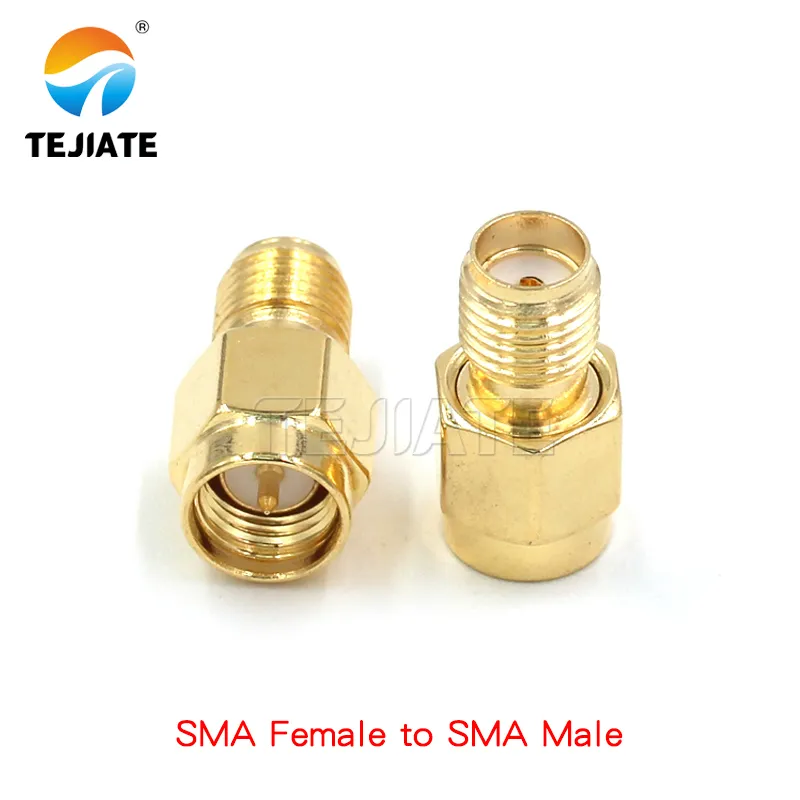
This diagram shows the structure of an SMA female-to-male adapter, commonly used in scenarios requiring gender conversion in RF links.
- Male-to-female (M–F) adapters are the workhorses, bridging a device port to a cable end.
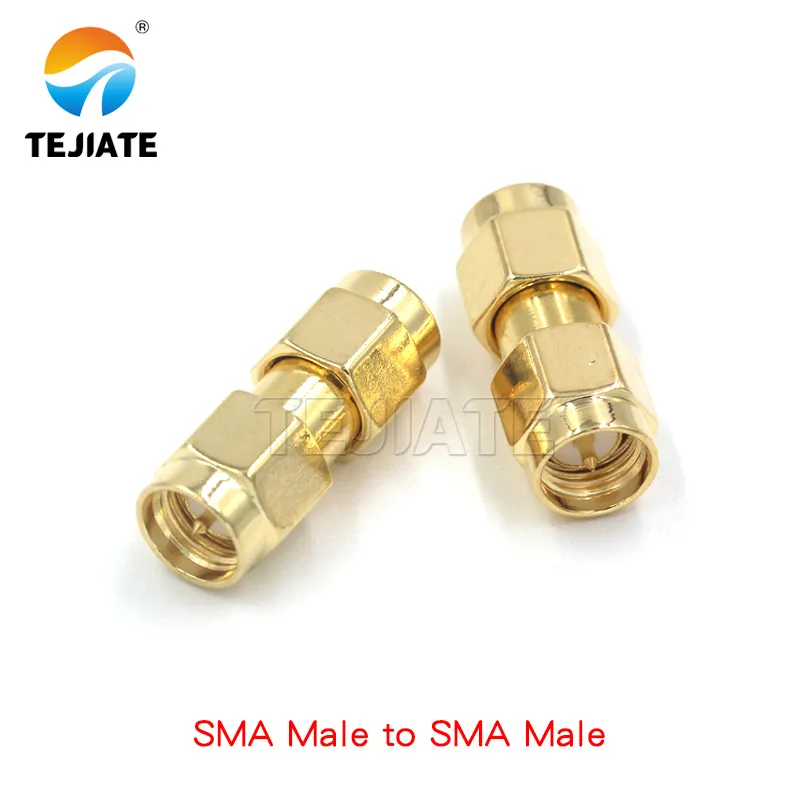
This diagram illustrates the use of an SMA male-to-male adapter, primarily for connecting two female ports, but care should be taken not to confuse it with a female-to-female coupler.
- Male-to-male (M–M) types act as “gender changers,” though many engineers have accidentally bought these when they actually needed a coupler.
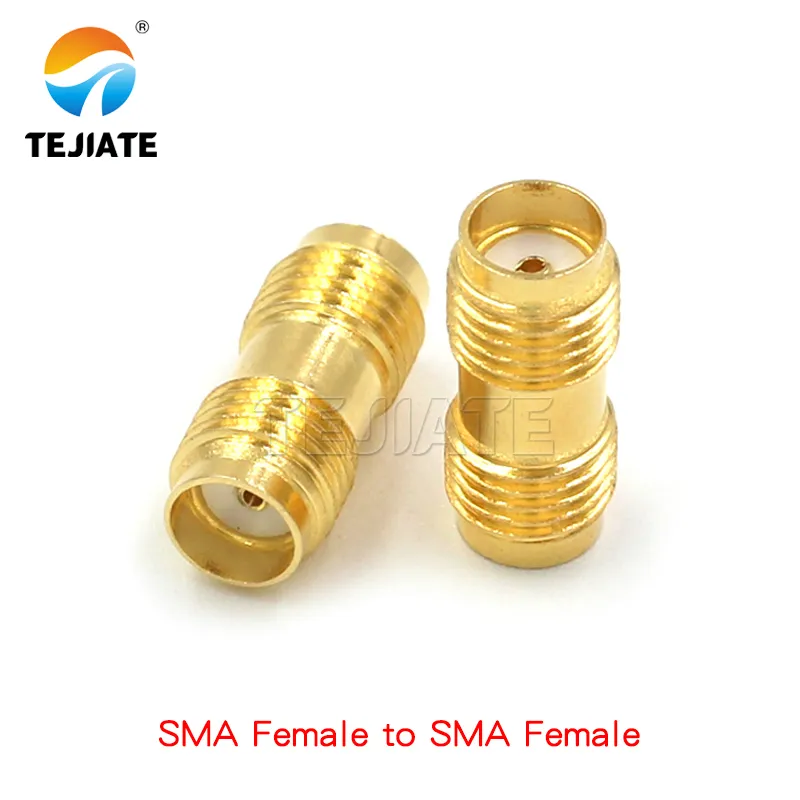
This diagram shows an SMA female-to-female adapter (often called a double-female coupler), used to directly connect two male-ended cables to form a continuous RF path.
- Female-to-female (F–F) versions allow two male-ended cables to connect directly.
3. Polarity
Watch carefully for RP-SMA (reverse polarity). Many Wi-Fi routers use RP-SMA female ports, and they can fool you at first glance. The shells look the same, but the pin configuration isn’t. More than one technician has discovered this mistake only after the parts arrived. A quick polarity check before checkout can save both frustration and shipping delays.
From a practical standpoint, these checks prevent misorders and protect your workflow. Imagine buying an rp sma right angle adapter for your router, only to realize the center pin doesn’t match—suddenly, your weekend project is on hold. For a broader overview of connector families across IoT, test, and telecom gear, see TEJTE’s RF connector types and uses.
When should you choose 90°, 45°, or 135° to solve clearance?
Not all space constraints are the same, which is why multiple elbow geometries exist. A 90° elbow (L-shape) is the most common. It keeps the connector tight against the case and prevents a cable from sticking straight out. Imagine a compact SDR with its SMA port recessed a few millimeters—forcing a straight plug risks bending the cable or even cracking the jack. A 90 degree sma adapter solves that cleanly.
The 45 degree sma adapter has its own niche. Instead of forcing a sharp bend, it guides the cable upward or downward at a gentle slope. This small detail can make test setups much neater, especially when several coax lines have to cross paths without strain. If you’ve ever had to weave cables around a heat sink, you’ll know how much difference that smoother angle can make.
Then there’s the 135 degree sma adapter, sometimes labeled as a “reverse L” or sma elbow adapter. It’s less common, but invaluable when ports face downward or sideways in awkward enclosures. The slanted angle balances clearance with serviceability, helping you reach ports that would otherwise stay blocked.
Performance-wise, the differences are minor. TEJTE datasheets show angled adapters hold VSWR ≤1.10 and insertion loss ≤0.15 dB up to 6 GHz, not far off from straight connectors at ≤1.05 VSWR. They’re also rated for temperature swings from −65 °C to +165 °C, so they remain reliable in outdoor CPEs or heated lab racks. A quick tip: always measure the protrusion length. A right-angle bulkhead may extend 11 mm from the panel. If your nearest heat sink sits only 10 mm away, a 45° elbow could be the safer bet.
Will a right-angle adapter add more loss than a short pigtail?

This diagram, accompanying the text comparing adapter loss vs. pigtail loss, shows the typical structure of RG316 cable, whose loss characteristics are a key factor in choosing between an adapter and a jumper.
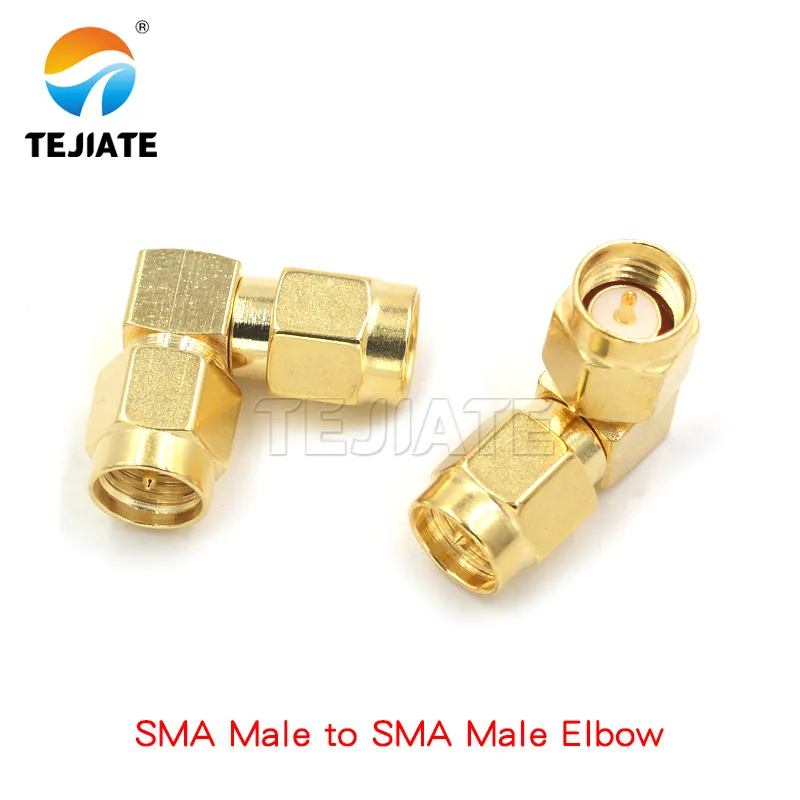
This physical photo visually demonstrates the form factor and interface types of an SMA male-to-male elbow adapter, helping users understand its mechanical advantages in space-constrained environments.
This is one of the most debated points in RF labs: is a sma right angle adapter worse for loss than a short coax jumper? The numbers tell the story. TEJTE’s datasheets list insertion loss ≤0.15 dB at 6 GHz, which is almost identical to the loss of a 10 cm RG316 coax jumper—about 0.146 dB at 2.4 GHz. Swap in RG174, and the figure is slightly higher at roughly 0.15 dB over the same length.
In practice, the difference between a well-made elbow and a short cable is small. The real question is mechanical. A rigid adapter puts all the weight directly on the port. If your device is subject to vibration, or if the connector hangs unsupported, even a low-loss LMR200 jumper may be the smarter call. On the other hand, for high-density rack gear or handheld SDRs, the compact footprint of an adapter can be a lifesaver.
One practical tip: always consider how often the connection will be moved. For temporary test setups, adapters are convenient. For permanent installations or field gear, a jumper often protects the port better. If you’d like a deeper dive into how different cables stack up, TEJTE’s RF cable selection and attenuation guide compares RG174, RG316, and LMR200 with real-world charts. It’s worth checking before you decide between a coupler and a pigtail.
Pick the right layout: male-to-female, male-to-male, or female-to-female
Getting the layout right is critical. A mislabeled order can leave you with an adapter that doesn’t fit anywhere in your setup. That’s why it helps to slow down and double-check port genders before buying a sma right angle adapter.
- SMA right angle male to female adapter: By far the most common choice. It bridges a device’s female port to a cable’s male end and redirects the connection neatly at 90°.
- SMA right angle male to male adapter: Less common, but useful when linking two modules or instruments that both present female ports.
- SMA right angle female to female adapter: Often called a “gender changer.” It lets two male cable ends connect directly.
Here’s a quick tip from the field: always sketch your chain on paper before ordering. Many engineers have bought a male-to-male elbow assuming it would fit a router, only to discover both ends refuse to mate. That small step of writing it out saves both frustration and return shipping.
Mechanical dimensions matter too. TEJTE’s SMA-JKW bulkhead models, for instance, extend about 16.3 mm in length. Stack a few of them side by side, and you’ll quickly eat up valuable panel space. If you’re designing a dense rack or enclosure, measure twice before committing.
For those building multi-connector layouts, TEJTE’s SMA adapter buying guide breaks down how gender and angle combinations prevent mismatches. It’s a handy reference if you’ve ever wrestled with misaligned SMA ports in a crowded test rig.
Should you use a right-angle bulkhead adapter for panels?
When a connection has to pass through a chassis wall or outdoor enclosure, a right angle bulkhead SMA adapter is often the cleanest solution. It not only preserves RF integrity but also anchors firmly to the panel with a nut and O-ring, avoiding the stress that free-hanging connectors create.
There are a few practical checkpoints:
- Panel thickness: TEJTE’s bulkhead elbows typically support 1.5–3 mm panels, using standard 1/4-36 UNS threads. If your design doesn’t match this spec, you’ll fight with installation.
- Torque and sealing: A snug, not excessive, torque ensures the O-ring compresses evenly. Done right, the seal achieves IP67 protection, keeping dust and water out of the housing. This matters for CPEs on rooftops, surveillance cameras, or outdoor wireless bridges.
- Frequency range: Like in-line elbows, bulkhead adapters hold VSWR ≤1.10 with insertion loss ≤0.15 dB up to 6 GHz, and some models extend to 12.4 or 18 GHz without detuning.
One common mistake is mixing a straight feedthrough with a short jumper to “fake” a bulkhead solution. While it can work, the extra lever arm often places more stress on the port and panel. A proper bulkhead right-angle adapter—rated for ≥500 mating cycles and low contact resistance—keeps both the equipment and enclosure safer over the long term.
If you’re weighing options, TEJTE’s bulkhead connector guide details flange vs threaded mounts, torque limits, and sealing methods. It’s a useful read before you cut holes in your enclosure.
Seal outdoor links: do you need waterproof RA adapters?
Move a connection outdoors and the game changes. Rain, dust, and temperature swings can do more damage to RF links than insertion loss ever will. That’s where a waterproof right angle SMA adapter earns its keep, protecting both the signal and the equipment.
TEJTE’s bulkhead versions use silicone O-ring seals (type 6146) that press firmly against the panel surface. Properly installed, they meet IP67 standards, meaning the joint withstands rain, dust, and even temporary submersion. Pair that with a low-loss coax such as LMR200, and you get a link that holds up from DC through 6 GHz without fear of corrosion.
A quick field reminder: don’t crank the nut too tight. Over-compression flattens the O-ring, and instead of sealing better, it may leak sooner. The sweet spot is an even compression that closes the gap but leaves the gasket intact.
Outdoor adapters also make servicing easier. Swapping a weathered cable on a rooftop CPE or a pole-mounted Wi-Fi bridge is far less hassle when the sma right angle adapter is already panel-mounted and sealed. For a step-by-step look at waterproof installation practices, see TEJTE’s SMA bulkhead connector guide, which covers gasket materials, torque checks, and enclosure prep.
Match frequency and materials for 18/26.5 GHz performance
Not every sma right angle adapter is built for the same mission. Standard brass-gold models work well in Wi-Fi, LTE, and general RF setups up to 6–12.4 GHz, but once you step into precision test labs, aerospace gear, or radar modules, the bar rises quickly. At 18 GHz and beyond, even small imperfections in plating or material stability show up as mismatch or drift.
Here’s how the materials line up in practice:
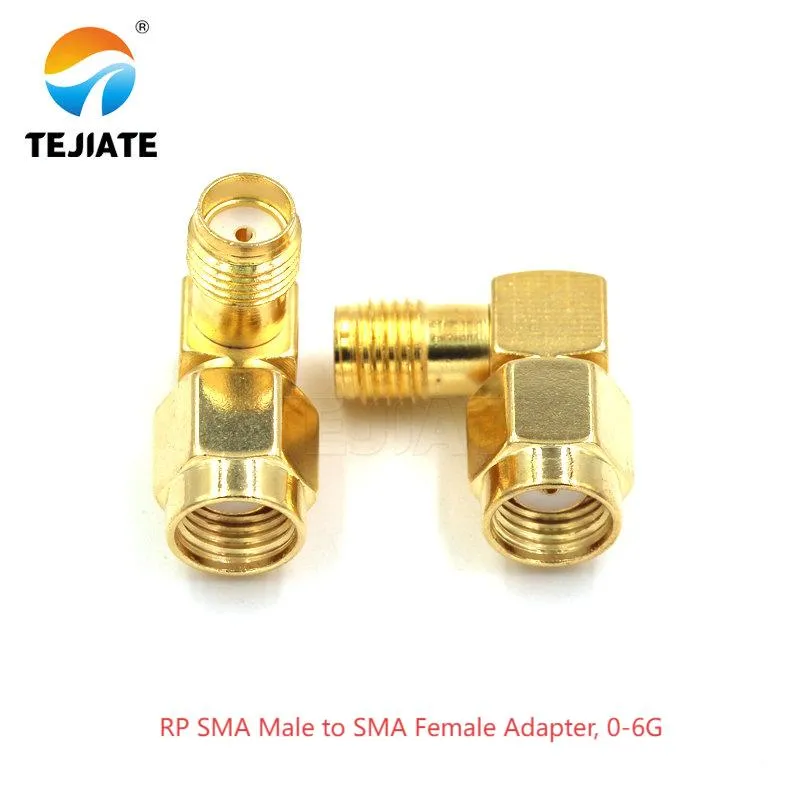
This diagram shows the structure of an RP-SMA male to SMA female adapter. Its gold-plated brass housing offers good conductivity and corrosion resistance while being cost-effective, making it the most common type for Wi-Fi, IoT, and general RF applications. The diagram emphasizes the polarity conversion function, used to connect devices with RP-SMA interfaces (like Wi-Fi routers) to standard SMA cables.
- Brass gold-plated housings: Affordable, widely available, and stable through 6–12.4 GHz. Perfect for routers, IoT boards, and most SDR rigs.
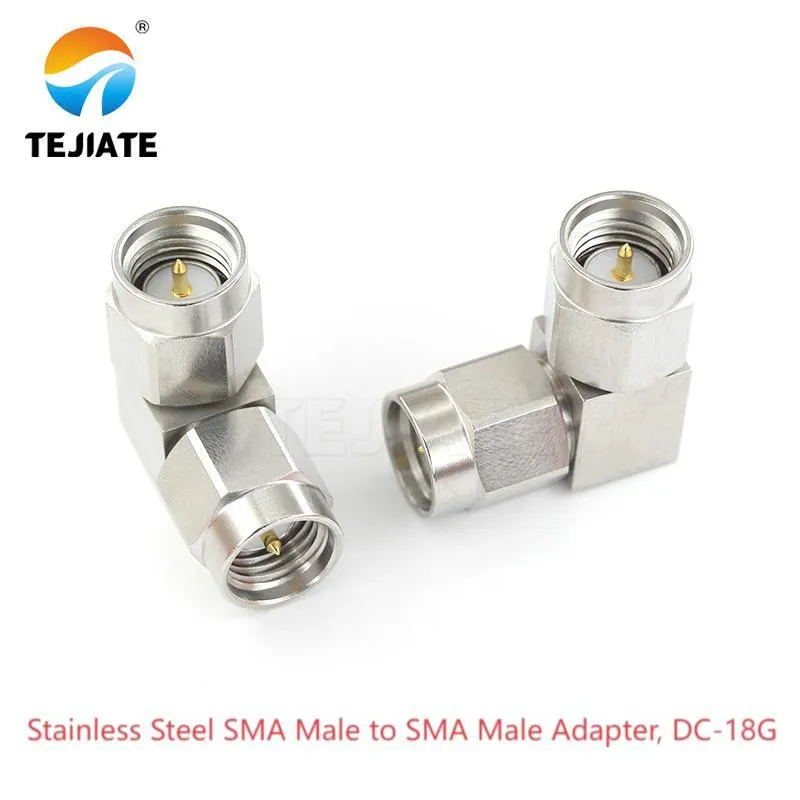
This diagram shows a high-performance SMA adapter made of stainless steel, typically rated for higher frequencies (e.g., 18GHz or 26.5GHz) with better mechanical durability, suitable for precision test applications requiring frequent mating or high-frequency operation.
- Stainless steel sma right angle adapter: Heavier and more durable, often rated for 18–26.5 GHz withstanding ≥1000 mating cycles. Favored in labs where connectors get swapped daily.
- Beryllium bronze sockets with gold plating: Maintain ultra-low contact resistance (≤5 mΩ inner, ≤2 mΩ outer) even under repeated stress, keeping high-frequency signals clean.
Datasheet values back this up. TEJTE’s high-frequency elbows hold VSWR ≤1.10 at 6 GHz, and precision models extend flat response into the 18–26.5 GHz range. The choice isn’t about looks—it’s about matching the material to the frequency and duty cycle.
Practical advice: don’t overspend on stainless or precision parts if your project never leaves the 2.4/5.8 GHz bands. But if you’re in a lab chasing tight margins, a rugged elbow rated for 26.5 GHz is worth every penny. For a wider comparison across connector families, the SMA vs BNC vs N-Type guide lays out where each excels.
Avoid RP-SMA mix-ups and cross-series traps before checkout
Few things frustrate engineers more than discovering a connector won’t mate after the order arrives. The culprit is often polarity. An rp sma right angle adapter looks almost identical to a standard SMA, but the pin layout is reversed. Routers and Wi-Fi cards often use RP-SMA female jacks, which require RP-SMA male plugs. Grab the wrong one, and you’ll be stuck with parts that simply don’t fit.
Cross-series adapters bring their own pitfalls. They may sound convenient, but every extra junction adds both loss and leverage:
- SMA to BNC right angle adapter is common in test environments where oscilloscopes or analyzers use BNC ports.
- SMA male to SO-239 right angle adapter sometimes shows up in ham setups to bridge into UHF gear.
- SMA to TNC or N right angle adapters exist too, but each block introduces about 0.1–0.15 dB loss and raises VSWR slightly.
Here’s the reality: a rigid block hanging off your port isn’t always worth it. If your design is already close to its loss budget, a short RG316 or LMR200 jumper is usually safer. It spreads out the stress, keeps insertion loss predictable, and avoids overloading fragile panel jacks.
A quick field note: treat cross-series adapters as temporary fixes, not permanent solutions. For long-term reliability, custom jumpers built with the right connectors are a better investment. TEJTE’s RF adapter cable catalog shows flexible alternatives, and our connector family overview maps out which types pair cleanly without workarounds.
Calculate clearance, lever arm, and loss for your setup
Choosing a sma right angle adapter isn’t only about matching frequency or gender. Clearance, torque, and electrical loss all come into play—and it pays to run the numbers before clicking “buy.”
Clearance comes first. TEJTE’s bulkhead elbows, such as the SMA-JKW, protrude about 8–11 mm beyond the panel. If your enclosure wall or a nearby heat sink leaves only 10 mm of space, the adapter will collide. That’s when switching to a 45° version may save both the port and your patience.
Lever arm torque is easy to underestimate. Even a light brass adapter (≈6 g) exerts force when extended. The rough calculation is:
Moment (N·m) ≈ Mass × 9.81 × Protrusion / 1000.
If the result tops 0.2 N·m, you risk stressing the connector. Field engineers often learn this the hard way—ports on handheld SDRs are especially vulnerable.
Loss rounds out the picture. At 2.4 GHz, both a right-angle elbow and a 10 cm RG316 jumper show about 0.15 dB of loss. At 6 GHz, the adapter still holds ≤0.15 dB, while the coax jumper’s loss rises depending on the cable type. This means adapters are competitive electrically, but you must weigh the mechanical trade-offs.
Quick tip: fragile gear benefits from a jumper; tight racks benefit from an elbow. For more on balancing space, torque, and loss, TEJTE’s inline vs bulkhead SMA coupler guide offers practical examples.
Install and torque a right-angle adapter without detuning
Mounting a sma right angle adapter may look simple, but the way you tighten it makes the difference between a clean connection and a detuned link. Rushing this step can compromise both VSWR and sealing.
Here’s a practical sequence many engineers follow:
- Hand-tighten first – Turn the nut gently until it seats. For most SMA connectors, finger pressure alone should get it snug.
- Apply proper torque – Use a calibrated wrench to finish the job. Recommended values are around 0.45–0.56 N·m. This range ensures a secure connection without over-stressing the threads.
- Check the O-ring – On waterproof models, look for even compression. If it bulges or cracks, you’ve gone too far, and the IP67 seal won’t hold.
- Inspect return loss – A quick VSWR test is worth the minute it takes. TEJTE datasheets show ≤1.10 up to 6 GHz, and you should see similar performance once installed.
- Secure against vibration – For outdoor units, revisit the connection after 24 hours. A slight torque recheck or dab of thread locker helps keep things stable under wind and weather.
One field tip: avoid grabbing pliers when the wrench won’t fit. The scratches they leave on brass or stainless housings open the door to corrosion, especially in damp conditions. If space is tight, a slim nut driver or torque wrench is the safer bet.
For more detailed handling practices, including cutout sizes and wrench flats, see TEJTE’s SMA connector dimensions and torque guide.
Right-Angle Adapter Clearance & Loss Estimator
| Field | Example Input | Notes |
|---|---|---|
| Angle | 90° | Options: 90° / 45° / 135° |
| Gender | M-F | Choose M-F / M-M / F-F / RP-SMA |
| Freq_Target (GHz) | 2.4 | Common Wi-Fi or LTE band |
| IL_RA (dB) | 0.15 | Datasheet spec: <0.15 dB @ 6 GHz |
| Alt_Cable_Type | RG316 | Options: RG174 / RG316 / LMR200 |
| Alt_Cable_Length (m) | 0.1 | Jumper length in meters |
| Alpha(f) (dB/m) | 1.46 | Attenuation from cable chart |
| Protrusion (mm) | 11 | Adapter length past panel |
| Mass (g) | 6 | Brass elbow weight |
| Clearance Needed (mm) | 12 | Space available in enclosure |
| O-ring | Yes | Required for outdoor installs |
Calculation rules:
- IL_Total_RA = IL_RA
- IL_Total_Pigtail = Alpha(f) × L + 0.2 dB (two connectors)
- Moment ≈ Mass × 9.81 × Protrusion / 1000 (N·m)
- Clearance_Pass = Protrusion ≤ Clearance_Needed
- Loss_Pass = min(IL_Total_RA, IL_Total_Pigtail) ≤ 1 dB
- Outdoor_Pass = O-ring must be Yes if outdoor
What does this mean in practice? If the adapter sticks out more than the clearance you’ve measured, or if torque exceeds 0.2 N·m, a short jumper may be safer. On the flip side, when space is tight and loss budgets are strict, a precision 90 degree SMA adapter designed for 18–26.5 GHz might be the only way to stay within spec.
For a walk-through on applying these checks, TEJTE’s how-to guide on SMA installation shows real-world examples where elbows and jumpers trade places depending on stress, space, and frequency.
FAQs
Does a 90-degree SMA adapter degrade 5.8 GHz performance more than a straight coupler?
Not by much. A 90 degree SMA adapter is specified with insertion loss ≤0.15 dB up to 6 GHz, and that holds steady around the 5.8 GHz Wi-Fi band. In other words, your link budget won’t notice the difference.
A straight coupler does edge ahead slightly, showing VSWR ≤1.05 compared with ≤1.10 for angled types, but in real deployments that margin is rarely critical. What you should watch instead is how far a coupler sticks out; that extra length can strain delicate ports.
Tip from the field: if your project is space-sensitive, choose the elbow; if it’s in a vibration-free rack, a straight coupler works fine. For a full breakdown, check TEJTE’s RF cable attenuation guide where coax loss and adapter loss are compared side by side.
Are RP-SMA right angle adapters interchangeable with standard SMA at the router port?
No. An rp sma right angle adapter is not a drop-in substitute. The shells look almost identical, but the center pin is reversed. Routers typically ship with RP-SMA female ports, which require RP-SMA male plugs. A standard SMA male simply won’t mate.
This small detail causes big headaches. I’ve seen buyers order a batch of SMA elbows for routers, only to realize the pins don’t align once they unpacked the gear. Always check port polarity before placing an order.
If you’re unsure, TEJTE’s SMA connector families overview has clear reference diagrams to confirm whether your device is SMA or RP-SMA.
What torque should I use when tightening a waterproof right-angle adapter with an O-ring?
For SMA connectors, the recommended torque sits between 0.45–0.56 N·m. With a waterproof right angle SMA adapter, that torque is enough to compress the O-ring evenly without crushing it. Go too light, and the IP67 seal won’t hold; go too heavy, and the gasket may split.
A safe method is to hand-tighten first, then finish with a torque wrench. For outdoor units like rooftop CPEs or pole-mounted Wi-Fi bridges, it’s smart to recheck torque after 24 hours of exposure. Weather cycles can shift fittings slightly.
Need more details? TEJTE’s bulkhead waterproof guide walks through sealing methods and torque checks step by step.
When should I pick a 45° or 135° elbow instead of a 90° right-angle?
It depends on how the cable exits your device. A 45 degree SMA adapter softens the bend, easing strain on ports when cables must angle upward or downward. This can extend connector life in dense test racks where lines cross at odd angles.
A 135 degree SMA adapter—sometimes sold as a “reverse L”—is less common but handy when a port faces downward or sideways inside an enclosure. It provides a slanted exit that clears nearby walls or heat sinks.
Performance is nearly identical across these geometries. TEJTE datasheets confirm insertion loss ≤0.15 dB up to 6 GHz and VSWR ≤1.10. So the choice is really about mechanics, not RF. If clearance is tight along a flat wall, 90° works best. If stress relief matters more, 45° or 135° angles are the safer bet.
Do stainless-steel right-angle adapters impact VSWR compared with brass gold-plated parts?
Electrically, both perform within spec. A stainless steel SMA right angle adapter doesn’t magically lower VSWR—it’s chosen for its mechanical durability. Brass gold-plated models, common in everyday Wi-Fi and IoT gear, are stable to 6–12.4 GHz with VSWR ≤1.10. Stainless versions, by contrast, withstand ≥1000 mating cycles and are often rated for 18–26.5 GHz precision test instruments.
So when do you need stainless? If you’re swapping connectors daily in a lab, or if your gear runs at 18+ GHz, stainless pays off. Otherwise, brass with gold plating is more cost-effective for routine setups. For a side-by-side material comparison, TEJTE’s RF connector guide shows when to choose brass, stainless, or plated alloys.
For cross-series needs (e.g., SMA-to-BNC right angle), is a custom coax jumper safer than a rigid block?
In most cases, yes. While you can buy an SMA to BNC right angle adapter or even an SMA male to SO-239 elbow, each rigid block adds ~0.1–0.15 dB loss and places extra torque on the port. That’s fine for a quick lab test but not for permanent installs.
A custom coax jumper spreads out the stress and keeps connections flexible. For example, a 10 cm RG316 jumper introduces about 0.15 dB at 2.4 GHz, which is the same as an elbow but without the rigid lever arm pulling on your panel jack.
Practical tip: use rigid blocks only when speed matters. For field deployments or sensitive SDRs, order a short jumper instead. TEJTE’s RF adapter cable catalog lists flexible assemblies designed for this very purpose.
Conclusion
At the end of the day, choosing a sma right angle adapter isn’t about adding another part to your RF chain—it’s about solving real, everyday problems. Clearance around enclosures, strain relief for fragile ports, or fitting multiple cables into a cramped rack all make these elbows indispensable. With insertion loss kept to ≤0.15 dB up to 6 GHz, and premium versions stable through 18–26.5 GHz, performance is rarely the limiting factor.
What matters more is context. For outdoor Wi-Fi or 5G gear, an IP67 waterproof bulkhead right-angle adapter ensures long-term reliability. In high-frequency test labs, stainless steel elbows rated to 26.5 GHz provide the durability and precision needed for repeat use. And when mechanical torque threatens a delicate SDR port, sometimes a short RG316 jumper is smarter than any rigid elbow.
The rule of thumb is simple: match the angle, gender, and material to your environment, not just the spec sheet. If you take a few minutes to check polarity, clearance, and sealing requirements before ordering, you’ll save yourself both time and frustration.
For more detailed guidance, explore TEJTE’s SMA adapter series and product catalog, where bulkhead, inline, waterproof, and cross-series solutions are laid out with real specs and use cases. Whether you’re building IoT devices, upgrading a router, or configuring a lab bench, the right angle really can make all the difference.
Bonfon Office Building, Longgang District, Shenzhen City, Guangdong Province, China

A China-based OEM/ODM RF communications supplier
Table of Contents
Owning your OEM/ODM/Private Label for Electronic Devices andComponents is now easier than ever.
